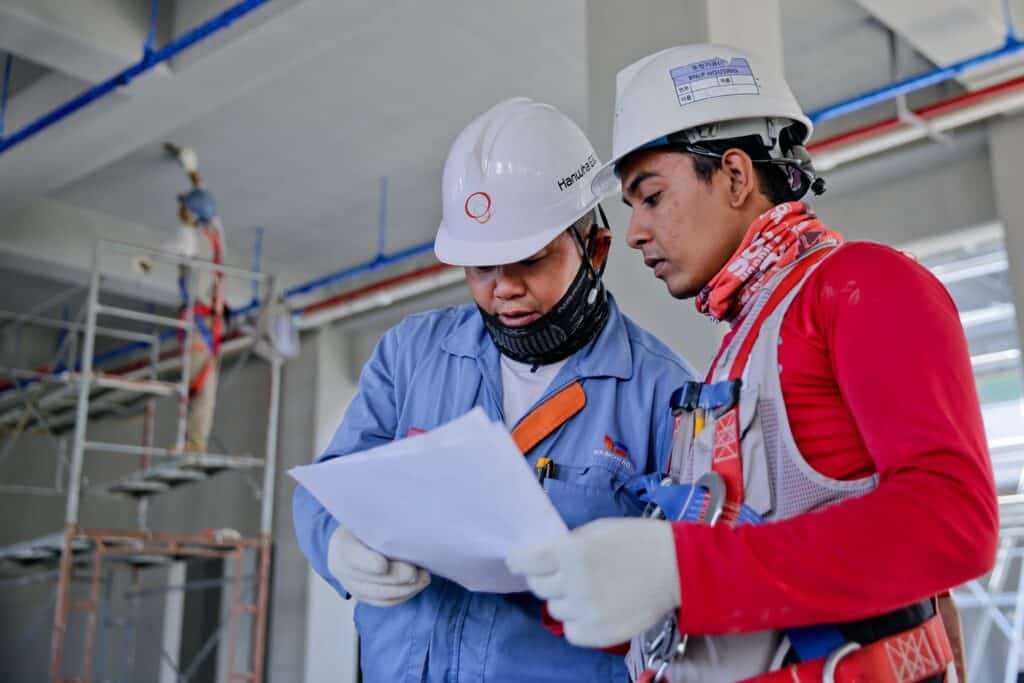Every employee has a right to work in a safe environment. But what happens when you identify an issue that could be putting your health or safety at risk? Knowing how to report a safety issue at work can make all the difference in ensuring that your workplace is safe and secure for everyone.
In this blog post, we’ll discuss the most important steps on how to report a safety issue, from understanding your rights as an employee to seeking legal advice if necessary. We’ll also provide tips for preventing future issues and strategies for making sure that your voice is heard in achieving safe workplace conditions.
Read on to learn more about how you can ensure the safety of yourself and others by properly reporting any potential risks.
How to Report a Safety Issue at Work: 5 Steps to Safety
1. Understand Your Rights as an Employee
When it comes to reporting a work safety issue, employees have a right to do so without fear of retribution. First and foremost, workers should be aware of their rights and responsibilities as dictated by the Occupational Health and Safety Act (OSHA). All U.S. states have an OSHA-approved plan that outlines the specific duties of employers and employees.

Employees should feel comfortable reporting any health and safety concerns to their supervisor or manager without fear of being reprimanded for speaking up. Additionally, OSHA laws provide protection for workers who report potential hazards in the workplace as retaliation is prohibited.
It’s essential that employers take all safety issues seriously, ensure prompt investigations into reported problems and address any preventative measures needed in order to promote a safe working environment. Employees can also contact their local OSHA office if they feel that they are not being taken seriously or if they feel like their safety concerns are not being addressed properly or in an appropriate amount of time.
2. Identify and Document the Safety Issue
Before reporting a work safety issue, you must properly identify it. This means understanding the exact nature of the problem and how it could negatively affect employees or customers if not addressed.
When identifying and documenting a safety issue at work, it is important to be as detailed and specific as possible. Make sure to list any relevant facts, including the date, time, location, and any other employees who were present when the incident occurred or when the safety concern originated.
In addition to written documentation, you should take pictures of the hazard or safety concern that you are reporting. This can provide contextual evidence for your report.
It is also important to record any verbal statements from witnesses or coworkers who may have seen or experienced the incident firsthand. These verbal accounts should also be documented in detail, including the names and positions of those making statements. It is best practice to have staff members sign off on their accounts to further substantiate the report.

3. Report the Safety Issue to Your Employer
Depending on the size of your workplace and its reporting policies, you may need to submit a formal written complaint or simply inform your manager orally.
When reporting a work safety issue to your employer, make sure that you are clear and concise in describing the nature of the concern. Provide any evidence that you have collected and be prepared to answer questions about how this could impact other employees or customers if not addressed properly. Make sure that they understand why immediate action needs to be taken in order to resolve the issue as quickly as possible.
Once your employer has been notified of the safety issue, they should immediately begin an investigation into the problem and provide feedback on their findings.
4. Follow Up on Your Reported Concerns
Employees should follow up on a work safety hazard report to ensure that the issue is properly addressed and remedied in a timely fashion. Once a problem has been reported, it is important for employees to stay informed of any developments and changes by regularly communicating with their manager or supervisor.

Additionally, following up also helps build trust between workers and management as it shows that the issue is of importance to both parties. This can help create an environment where any potential risks can be addressed promptly and workers feel comfortable bringing up any issues they may have without fear of repercussions.
Furthermore, following up on the report can help avoid consequences associated with not addressing the hazard such as loss of property or injury to personnel. Having accountability through communication makes sure that no time is wasted and that all safety protocols are followed correctly. When everyone works together, employers can keep their employees and workplaces safe from potential danger.
5. Know When to Contact a Workers’ Compensation Attorney for Help
Knowing when and how to report a safety issue at work is essential in keeping yourself and others safe while on the job. However, if an accident does occur despite all efforts to prevent it, then it is important for injured employees to contact an experienced workers’ compensation attorney.
If you or a loved one have been injured in the workplace, especially as a result of a workplace hazard that your employer did not take the necessary steps to correct, you should contact a workers’ compensation attorney today to obtain the financial compensation and medical care you deserve.
Reporting a work safety issue is an important step in keeping yourself and others safe while on the job. By following the steps outlined above, you can ensure that your concerns are taken seriously and addressed promptly. Knowing how to report a safety issue at work not only protects employees from potential danger but also builds trust between workers and management.
How to Report a Safety Issue at Work: FAQ’s
What can I expect after reporting a work safety issue to my employer?
Expect to be kept informed of any developments or changes by regularly communicating with your manager or supervisor. Your report should also be taken seriously and proper action should be taken to address the issue in a timely manner. Depending on the severity of the hazard, appropriate measures could include temporary closures, repairs or replacements to faulty equipment, protective gear or extra safety protocols as needed.
You can also expect that management will provide you with resources so you can better identify hazards in the future and proactively spot problems before anything bad happens. Ultimately, following up on safety hazard reports helps create an environment where everyone can work together safely and confidently.
What is the role of employers in keeping employees safe in the workplace?
Employers have a responsibility to keep their employees safe in the workplace by providing them with a safe working environment and adequate training. It is important for employers to minimize potential risks by adhering to recommended safety protocols, such as proper ventilation, fire safety, and making sure all equipment is in proper condition.
The employer should also be aware of any hazards that could potentially arise in the work environment and take necessary steps to address them. This includes conducting regular inspections and having appropriate response plans in place for potential emergencies. Additionally, employers should hold regular training sessions on workplace safety topics to ensure that all workers are aware of any dangers they may face while on the job.

Kotlar, Hernandez & Cohen: New Jersey Workers’ Compensation Lawyers
Kotlar, Hernandez & Cohen – The People First Lawyers – have been helping injured workers maximize their New Jersey workers’ comp claims since 1995. Our law firm works tirelessly for our clients to ensure you receive medical treatment, financial compensation, and justice, and can help you to know what not to do while on workers’ comp. With four board-certified workers’ compensation law attorneys on our team, we are well-equipped to help you obtain your workers’ compensation benefits.
If you or a loved one have been the victim of a work-related injury or occupational disease, contact our office to schedule a free consultation or call us 24/7 at (856) 751-7676.


